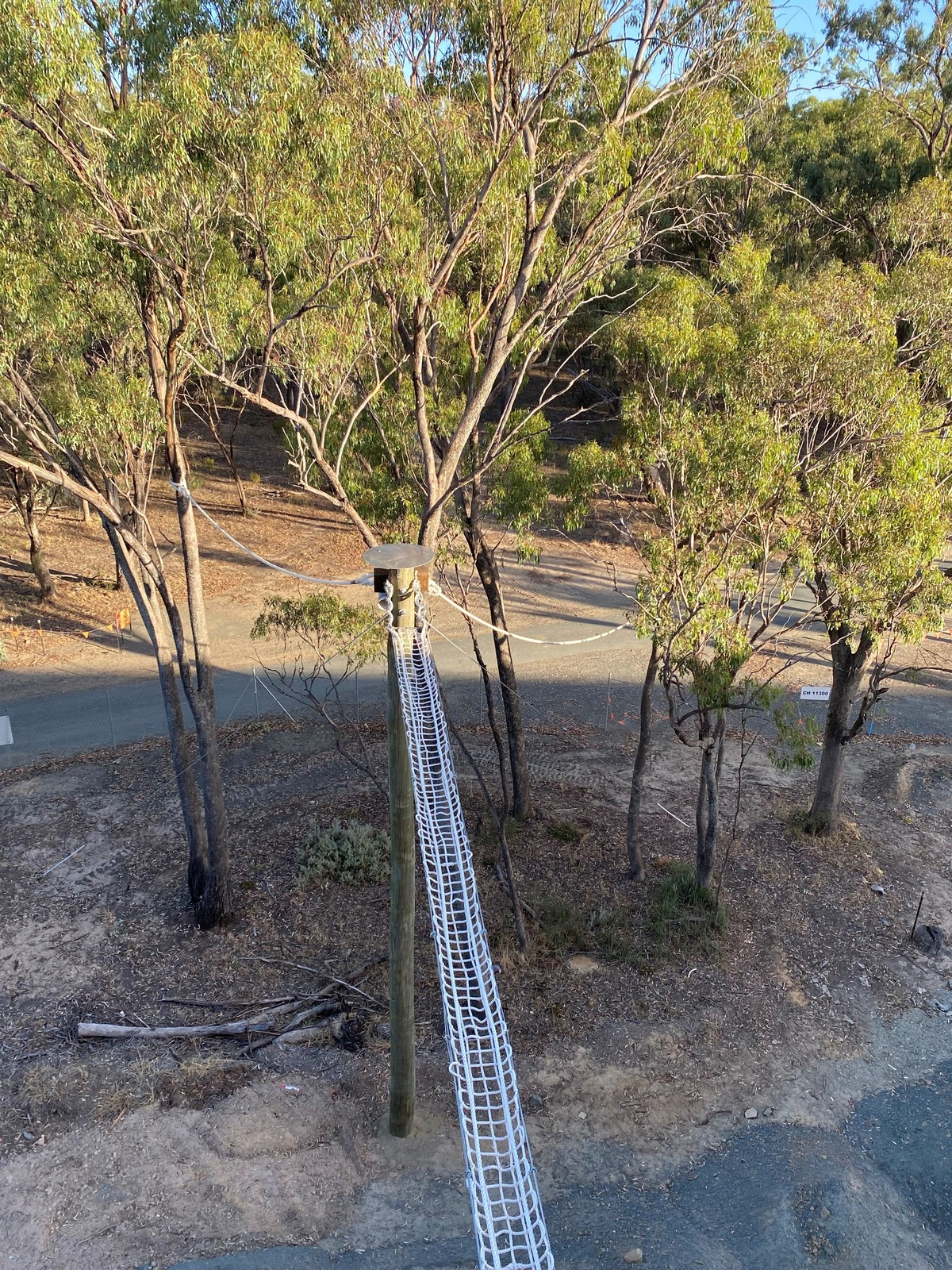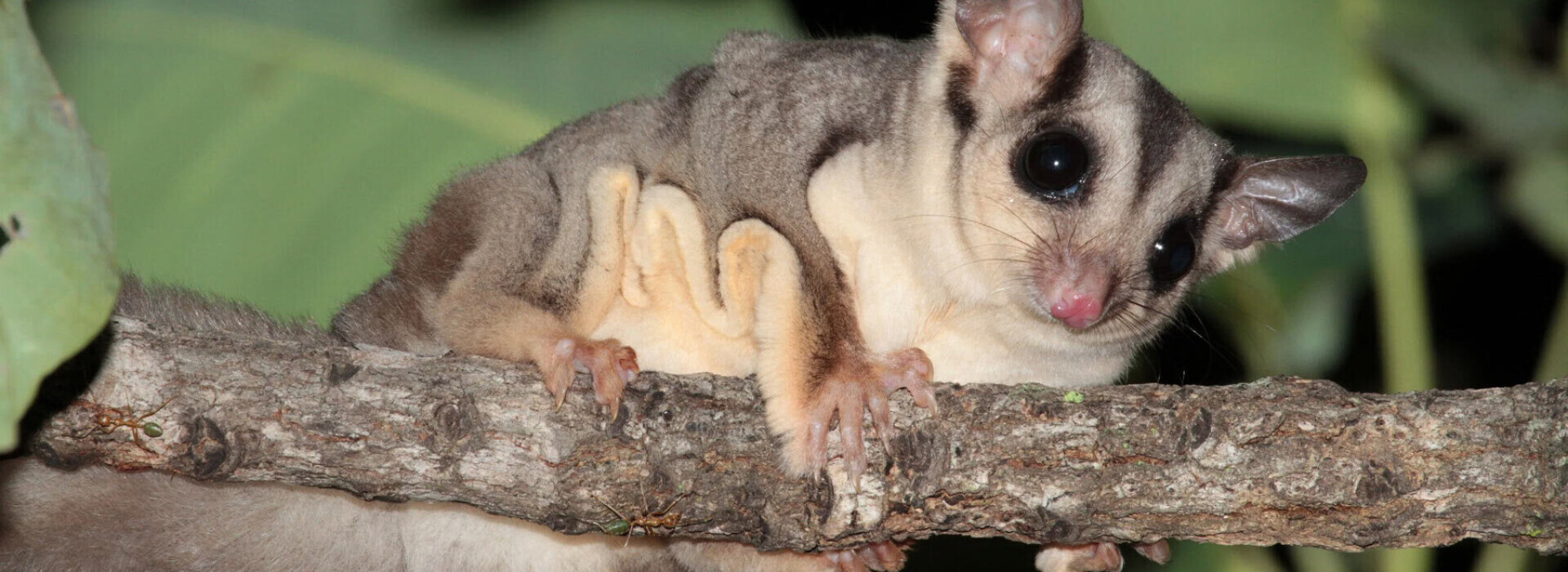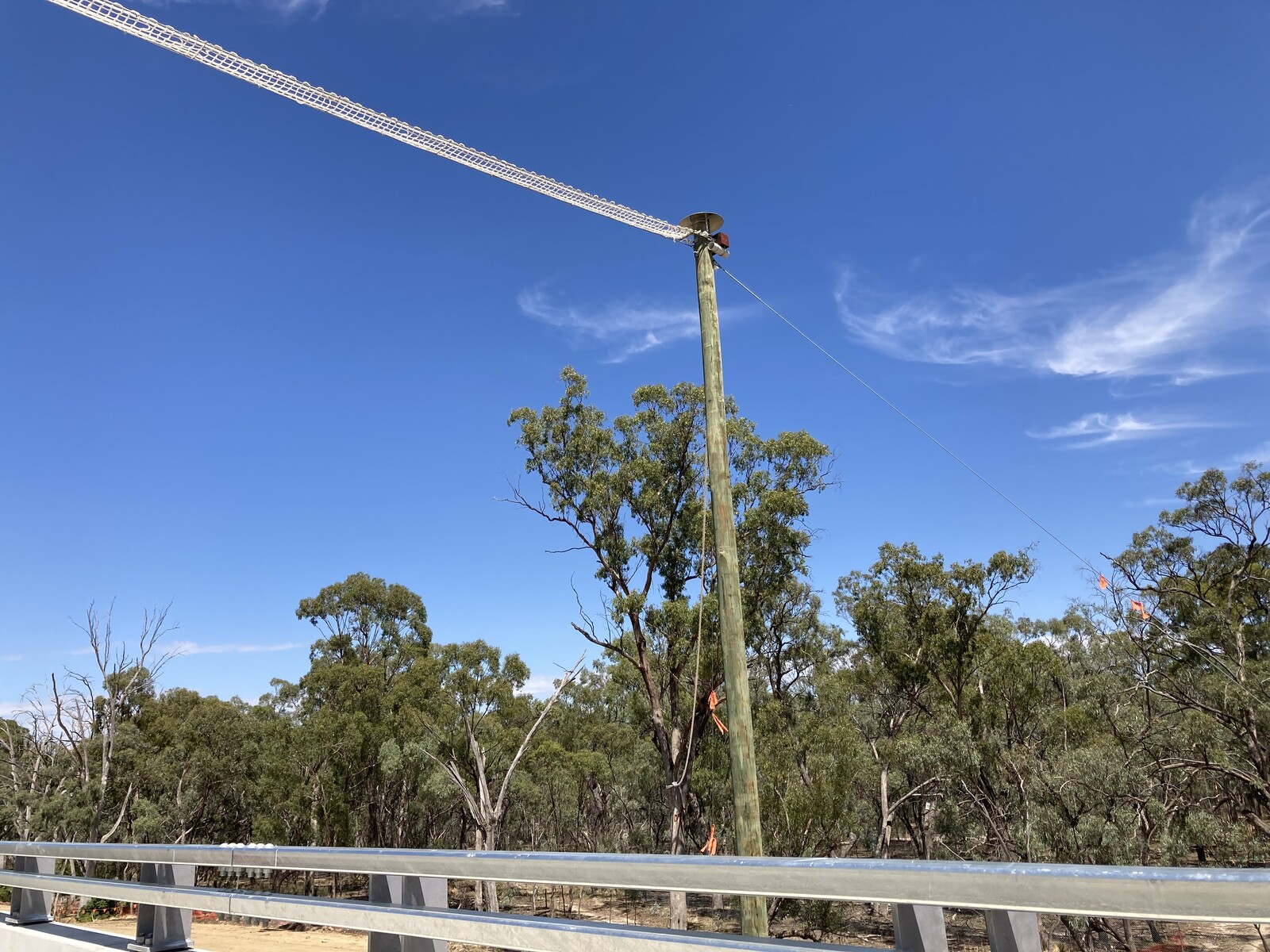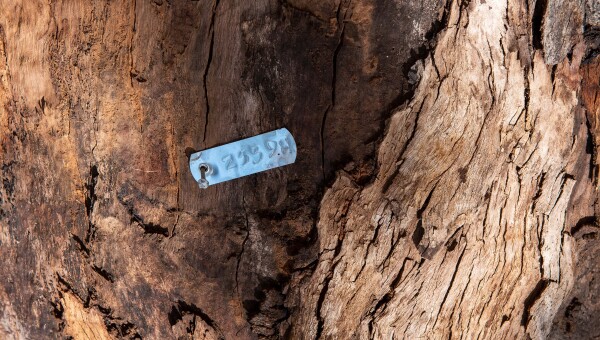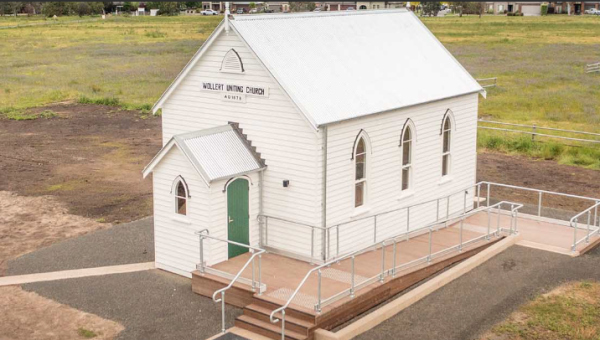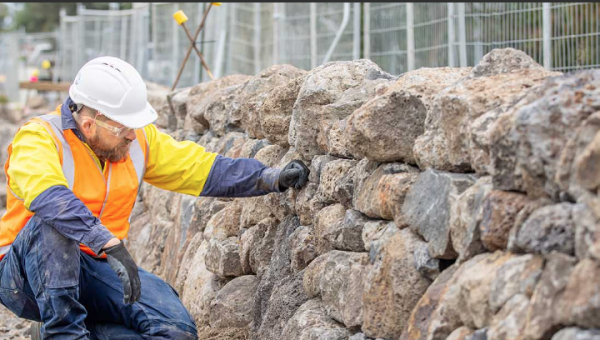On the Echuca-Moama Bridge project in northern Victoria, our team implemented a range of ecological initiatives to protect the impacted fauna surrounding the project site.
Large scale tree and vegetation clearing splintered the natural habitat of the indigenous fauna, including the squirrel and the sugar gliders. Crossing on the ground, instead of via tree canopies, increases the potential for predator attack, while the new road introduces the potential for fatalities from traffic impacts.
To combat the issue, several glider crossing points have been designed and installed to increase the connectivity between the habitat on either side of the new road. The designs were based on the recommendations and advice from one of Australia's foremost glider experts. Additionally, wood from the Large Old Trees (LOTs) removed from the project area have been repurposed to create fauna hollows.
The crossing areas will greatly minimise glider deaths due to road accidents, as well as mitigate the impact of ground predators. The inclusion of extra tree hollows will reduce the distance between living dens and foraging areas, potentially eliminating the need to cross the structure altogether. Both the crossings and the extra hollows have provided a blueprint for negating the impact of habitat fragmentation resulting from new transport infrastructure.
In total, seven wildlife crossings were installed as part of the project so that the squirrel gliders could move between trees and safely between habitats. 450 habitat hollows were also created to provide shelter for local wildlife. The rate of uptake of the different hollows by wildlife has been great – more than 50% of the hollows have been used by gliders, but no clear preferences for carved hollows, log hollows, traditional nest boxes or natural hollows have been found.
The project adopted an intentional objective to ‘learn while doing’ approach. Rather than simply installing a single hollow type to replace those lost during construction, we undertook a scientifically robust applied experiment to investigate the rates of use of four different hollow types by Squirrel Gliders and other species of wildlife. The canopy bridges have also been widely used by Squirrel Gliders and Sugar Gliders, effectively reconnecting populations on both sides of the new bridge.
